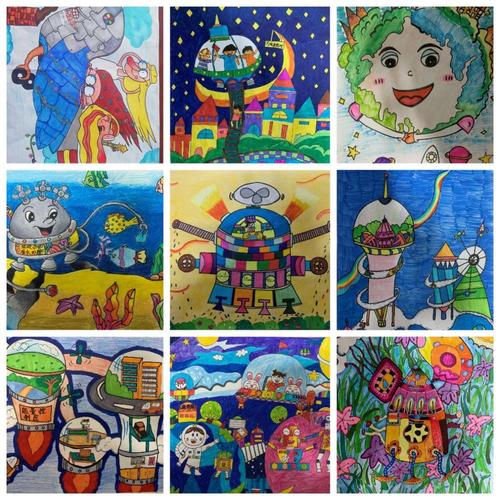1.DigitalArt
Exploring the Intersection of Technology and Art: A Horizontal Perspective
When it comes to the realm of art, the infusion of technology has opened up a whole new world of possibilities and creativity. The convergence of technology and art has given rise to innovative techniques, tools, and mediums that have revolutionized the way artists create and audiences experience art. In this discussion, we will explore the impact of technology on the field of art from a horizontal perspective, delving into various industries where this fusion has led to groundbreaking developments.

Digital art encompasses a wide range of artistic works created using digital technology. From digital painting and illustration to 3D modeling and animation, artists are leveraging advanced software and tools to bring their creative visions to life. The horizontal expansion of digital art has blurred the lines between traditional and digital mediums, allowing artists to experiment with new forms of expression and push the boundaries of artistry.
VR and AR technologies have transformed the way we perceive and interact with art. Artists are using these immersive technologies to create interactive and engaging art installations, exhibitions, and experiences. By merging the physical and digital worlds, VR and AR have enabled artists to transport audiences to fantastical realms and engage them in ways never before possible, offering a horizontal shift in the way art is experienced.
Generative art is a form of art that is created using algorithms and computer code to generate unique and ever-evolving artworks. Artists are harnessing the power of generative algorithms to create dynamic and interactive art pieces that evolve over time. This horizontal approach to art creation challenges traditional notions of authorship and invites viewers to participate in the creative process, blurring the boundaries between artist and audience.
Bioart explores the intersection of art and biology, using living organisms and biological processes as artistic mediums. Artists working in the field of bioart are creating thought-provoking artworks that raise questions about ethics, technology, and the environment. By incorporating living organisms into their artistic practice, bioartists are pushing the boundaries of what art can be and offering a horizontal perspective on the relationship between art and science.
Interactive installations combine art and technology to create immersive and participatory experiences for viewers. Artists are designing installations that respond to audience input, movement, and engagement, blurring the boundaries between the artwork and the viewer. By inviting viewers to actively participate in the creation of art, interactive installations offer a horizontal approach to art appreciation that challenges traditional notions of passive observation.
The fusion of technology and art has led to a horizontal expansion of creative possibilities, enabling artists to explore new mediums, techniques, and concepts. By embracing technology, artists are breaking free from traditional constraints and redefining the boundaries of artistry. As we continue to explore the intersection of technology and art, we can expect to see even more innovative and boundary-pushing works that challenge our perceptions and inspire us to see the world from a new perspective.
